Паница канинская
Прослушать информацию
Этикетаж
НКМ КП ОФ-712
№ ГК 6615056
Паница
Автор: Латышева М.А. (?)
Место создания: Канинская тундра, с. Ома
Материал: мех оленя, мех лисицы, мех собаки, сукно
Техника: шитье ручное
Размеры: длина 115 см
№ ГК 6615056
Паница
Автор: Латышева М.А. (?)
Место создания: Канинская тундра, с. Ома
Материал: мех оленя, мех лисицы, мех собаки, сукно
Техника: шитье ручное
Размеры: длина 115 см
Labeling
NKM KP OF-712
GK No. 6615056
Panitsa
Maker: Latysheva M.A. (?)
Place: the Kaninskaya tundra, Oma settlement
Material: reindeer fur, fox fur, dog fur, broadcloth
Technics: hand sewing
Dimensions: length 115 cm
GK No. 6615056
Panitsa
Maker: Latysheva M.A. (?)
Place: the Kaninskaya tundra, Oma settlement
Material: reindeer fur, fox fur, dog fur, broadcloth
Technics: hand sewing
Dimensions: length 115 cm
Паница – ненецкая женская верхняя зимняя одежда. Она распашная, полы её соединяются с помощью кожаных завязок.
Характерной особенностью этого типа одежды является отсутствие вертикальных конструктивных швов – все основные швы – горизонтальные. Такие паницы носят в Канинской и Тиманской тундрах, на островах Колгуев и Новая Земля.
Верхняя часть паницы сшивается из кусков меха белки, бобра, лисицы, средняя – из меха оленя, а нижняя - из полос собачьего меха. Подобный пошив раскрывает трёхчастное устройство мира у ненцев (верхний, средний, нижний).
Существует интересная ненецкая легенда, объясняющая появление на одежде меха собаки, а не какого-либо другого животного: «Бог сотворил после прочей всякой живности человека - мужчину и в вернейшие друзья создал ему собаку. Первая собака была голая, без шерсти, как и человек, и оберегала своего хозяина от дьявола, упорно пытавшегося пробраться в чум ненца, и, плюнув на него, покорить греху. Собака не пускала дьявола в чум. Чего только не предпринимал дьявол, морил собаку голодом и затем подбрасывал жирную кость, но собака не отходила от входа в чум. На последнее средство пустился демон, напустил лютый мороз. Собака коченеет, дрожит, а всё не пускает дьявола в чум. Дьявол усилил мороз, подошёл к собаке сзади и начал осторожно её гладить. Собака при этом поросла шерстью, ей стало тепло, она обрадовалась, завиляла хвостом, и впустила в чум демона, который плюнул в лицо спавшему хозяину и сделал его склонным ко злу. Жена ненца, узнав об этом, задушила собаку, содрала с неё шкуру и обшила ею свою паницу. С тех пор женская самоедская паница обшивается собачьей шкурой».
Характерной особенностью этого типа одежды является отсутствие вертикальных конструктивных швов – все основные швы – горизонтальные. Такие паницы носят в Канинской и Тиманской тундрах, на островах Колгуев и Новая Земля.
Верхняя часть паницы сшивается из кусков меха белки, бобра, лисицы, средняя – из меха оленя, а нижняя - из полос собачьего меха. Подобный пошив раскрывает трёхчастное устройство мира у ненцев (верхний, средний, нижний).
Существует интересная ненецкая легенда, объясняющая появление на одежде меха собаки, а не какого-либо другого животного: «Бог сотворил после прочей всякой живности человека - мужчину и в вернейшие друзья создал ему собаку. Первая собака была голая, без шерсти, как и человек, и оберегала своего хозяина от дьявола, упорно пытавшегося пробраться в чум ненца, и, плюнув на него, покорить греху. Собака не пускала дьявола в чум. Чего только не предпринимал дьявол, морил собаку голодом и затем подбрасывал жирную кость, но собака не отходила от входа в чум. На последнее средство пустился демон, напустил лютый мороз. Собака коченеет, дрожит, а всё не пускает дьявола в чум. Дьявол усилил мороз, подошёл к собаке сзади и начал осторожно её гладить. Собака при этом поросла шерстью, ей стало тепло, она обрадовалась, завиляла хвостом, и впустила в чум демона, который плюнул в лицо спавшему хозяину и сделал его склонным ко злу. Жена ненца, узнав об этом, задушила собаку, содрала с неё шкуру и обшила ею свою паницу. С тех пор женская самоедская паница обшивается собачьей шкурой».
Panitsa Kaninskaya (Nenets- pena' pani)
A panitsa is Nenets women's outerwear for winter. It is unbuttoned and loose belted by leather ties.
A characteristic feature of this type of clothing is the absence of vertical structural seams - all main seams are horizontal. Such panitsas are worn in the Kaninskaya and Timanskaya tundras, on the islands of Kolguev and Novaya Zemlya.
The upper part of the panitsa is sewn from squirrel, beaver and fox fur pieces, the middle part is made of reindeer fur and the lower one - of dog fur strips. Such tailoring reflects the three-part structure of the Nenets world (upper, middle, lower).
There is an interesting Nenets legend explaining the appearance of dog fur on clothes but not of any other animal: “After all other living creatures, God created a human, a man and created a dog for him as his most faithful friend. The first dog was naked, without hair like a man and protected its master from the devil, who stubbornly tried to get into the Nenets chum and spit on him to lure toward sin. The dog did not let the devil into the chum. Whatever the devil did, he starved the dog and then threw a bone, but the dog did not leave the chum entrance. The demon tried his last idea to generate a fierce frost. The dog stiffened and shook but still did not let the devil into the chum. The devil intensified the frost, came to the dog from behind and began to stroke it gently. At the same time, hair overgrew the dog, it felt warm, it was delighted, wagged its tail and let the demon into the chum, who spat in the face of the sleeping owner and made him prone to evil. The Nenets’s wife learning about this strangled the dog, tore off its skin and sewed it to her panitsa. Since then, the female Samoyed panitsa has been trimmed with dog fur ”.
A characteristic feature of this type of clothing is the absence of vertical structural seams - all main seams are horizontal. Such panitsas are worn in the Kaninskaya and Timanskaya tundras, on the islands of Kolguev and Novaya Zemlya.
The upper part of the panitsa is sewn from squirrel, beaver and fox fur pieces, the middle part is made of reindeer fur and the lower one - of dog fur strips. Such tailoring reflects the three-part structure of the Nenets world (upper, middle, lower).
There is an interesting Nenets legend explaining the appearance of dog fur on clothes but not of any other animal: “After all other living creatures, God created a human, a man and created a dog for him as his most faithful friend. The first dog was naked, without hair like a man and protected its master from the devil, who stubbornly tried to get into the Nenets chum and spit on him to lure toward sin. The dog did not let the devil into the chum. Whatever the devil did, he starved the dog and then threw a bone, but the dog did not leave the chum entrance. The demon tried his last idea to generate a fierce frost. The dog stiffened and shook but still did not let the devil into the chum. The devil intensified the frost, came to the dog from behind and began to stroke it gently. At the same time, hair overgrew the dog, it felt warm, it was delighted, wagged its tail and let the demon into the chum, who spat in the face of the sleeping owner and made him prone to evil. The Nenets’s wife learning about this strangled the dog, tore off its skin and sewed it to her panitsa. Since then, the female Samoyed panitsa has been trimmed with dog fur ”.
Посмотреть расположение
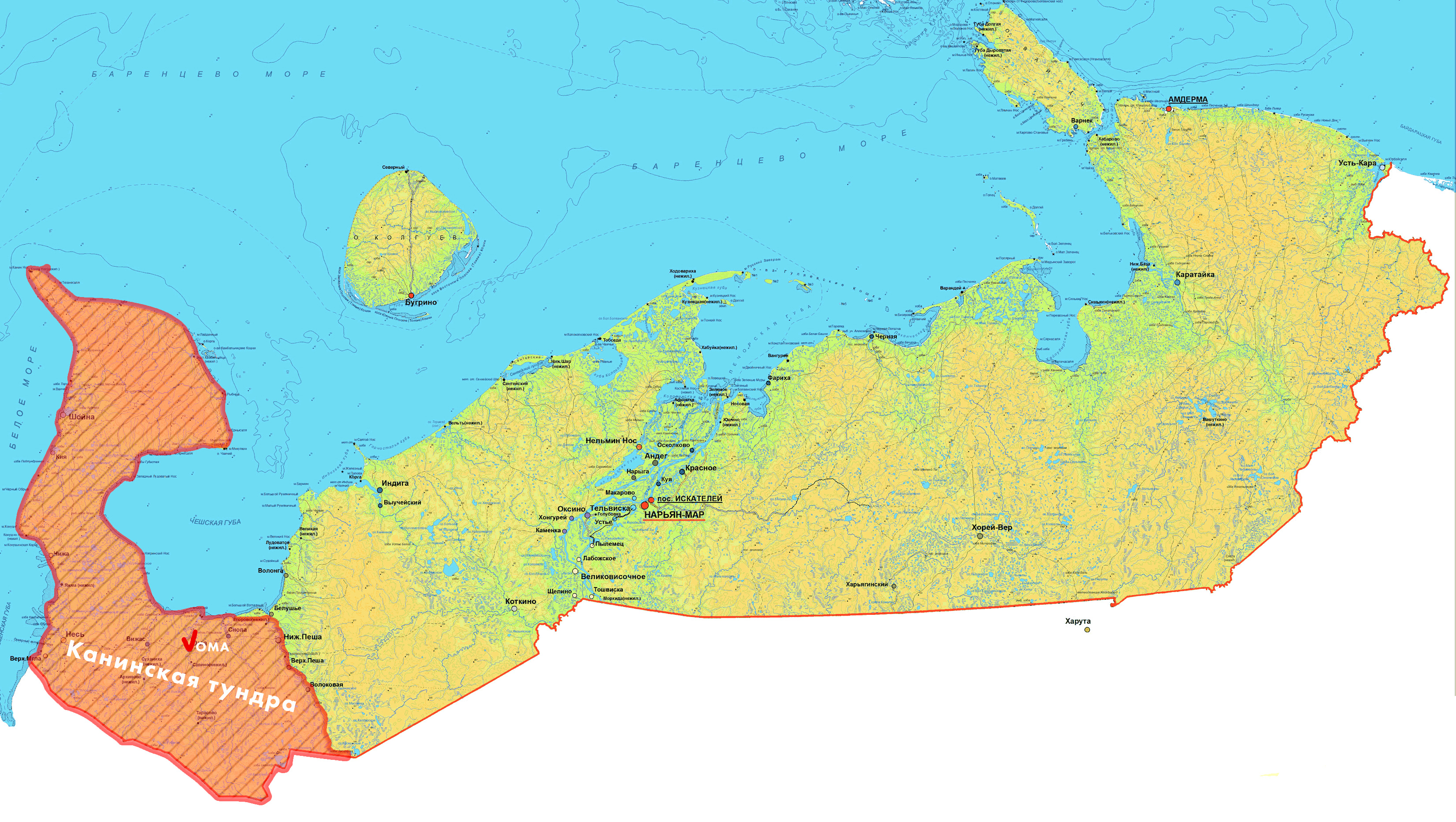
 Выберите язык
Выберите язык



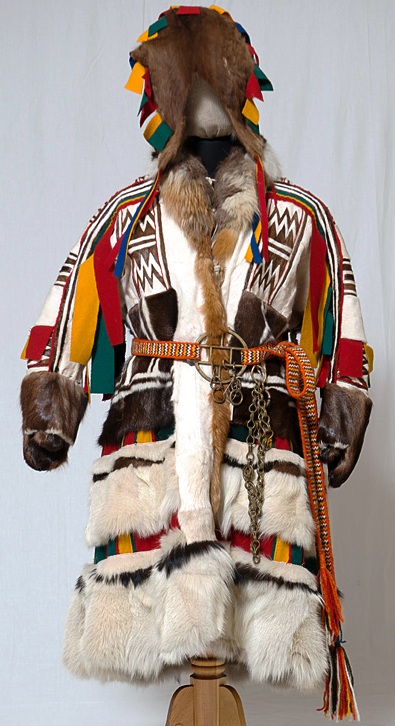
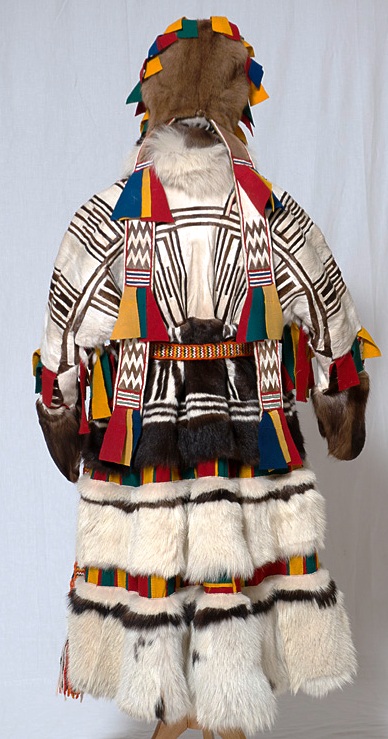
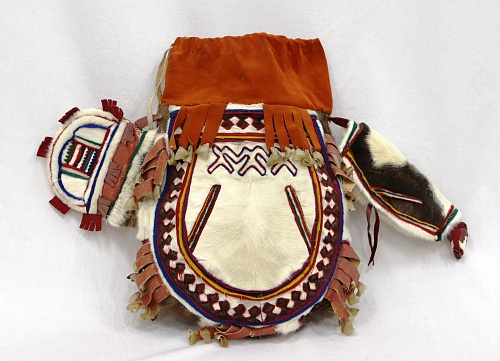
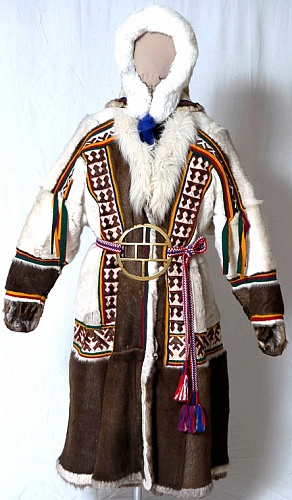
._1 (2).jpg)